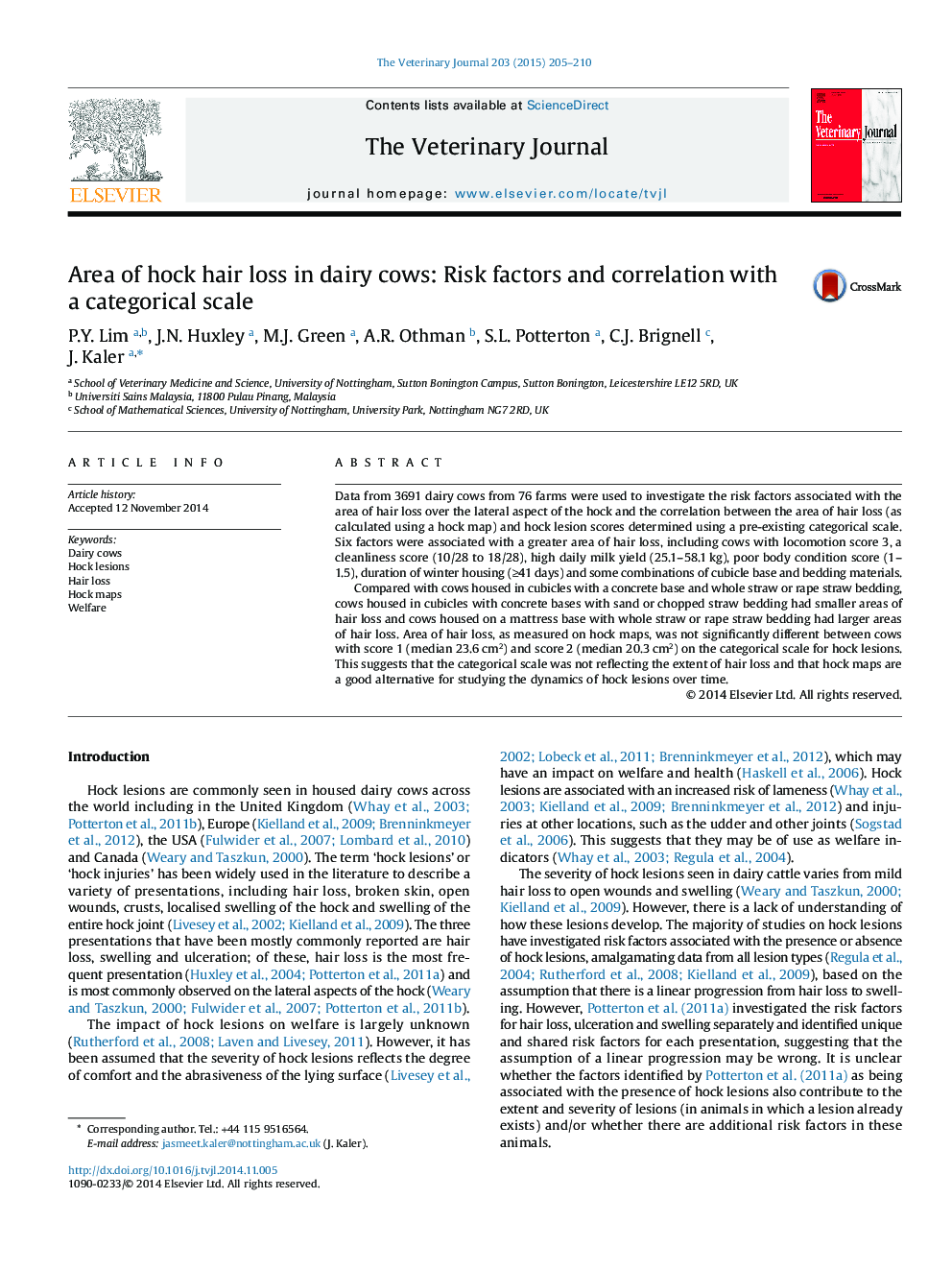| Article ID | Journal | Published Year | Pages | File Type |
|---|---|---|---|---|
| 5797604 | The Veterinary Journal | 2015 | 6 Pages |
â¢Hock maps were used to investigate risk factors for area of hair loss in dairy cows and its correlation with a categorical scale.â¢Cows with locomotion score 3, cleanliness score 10-18, daily milk yield (25.1-58.1âkg), body condition score (1-1.5), duration of winter housing (â¥41 days) and housed on a mattress base with whole straw or rape straw bedding had greater area of hair loss.â¢Categorical scoring scale did not differentiate between degree of hair loss.
Data from 3691 dairy cows from 76 farms were used to investigate the risk factors associated with the area of hair loss over the lateral aspect of the hock and the correlation between the area of hair loss (as calculated using a hock map) and hock lesion scores determined using a pre-existing categorical scale. Six factors were associated with a greater area of hair loss, including cows with locomotion score 3, a cleanliness score (10/28 to 18/28), high daily milk yield (25.1-58.1âkg), poor body condition score (1-1.5), duration of winter housing (â¥41 days) and some combinations of cubicle base and bedding materials.Compared with cows housed in cubicles with a concrete base and whole straw or rape straw bedding, cows housed in cubicles with concrete bases with sand or chopped straw bedding had smaller areas of hair loss and cows housed on a mattress base with whole straw or rape straw bedding had larger areas of hair loss. Area of hair loss, as measured on hock maps, was not significantly different between cows with score 1 (median 23.6âcm2) and score 2 (median 20.3âcm2) on the categorical scale for hock lesions. This suggests that the categorical scale was not reflecting the extent of hair loss and that hock maps are a good alternative for studying the dynamics of hock lesions over time.
